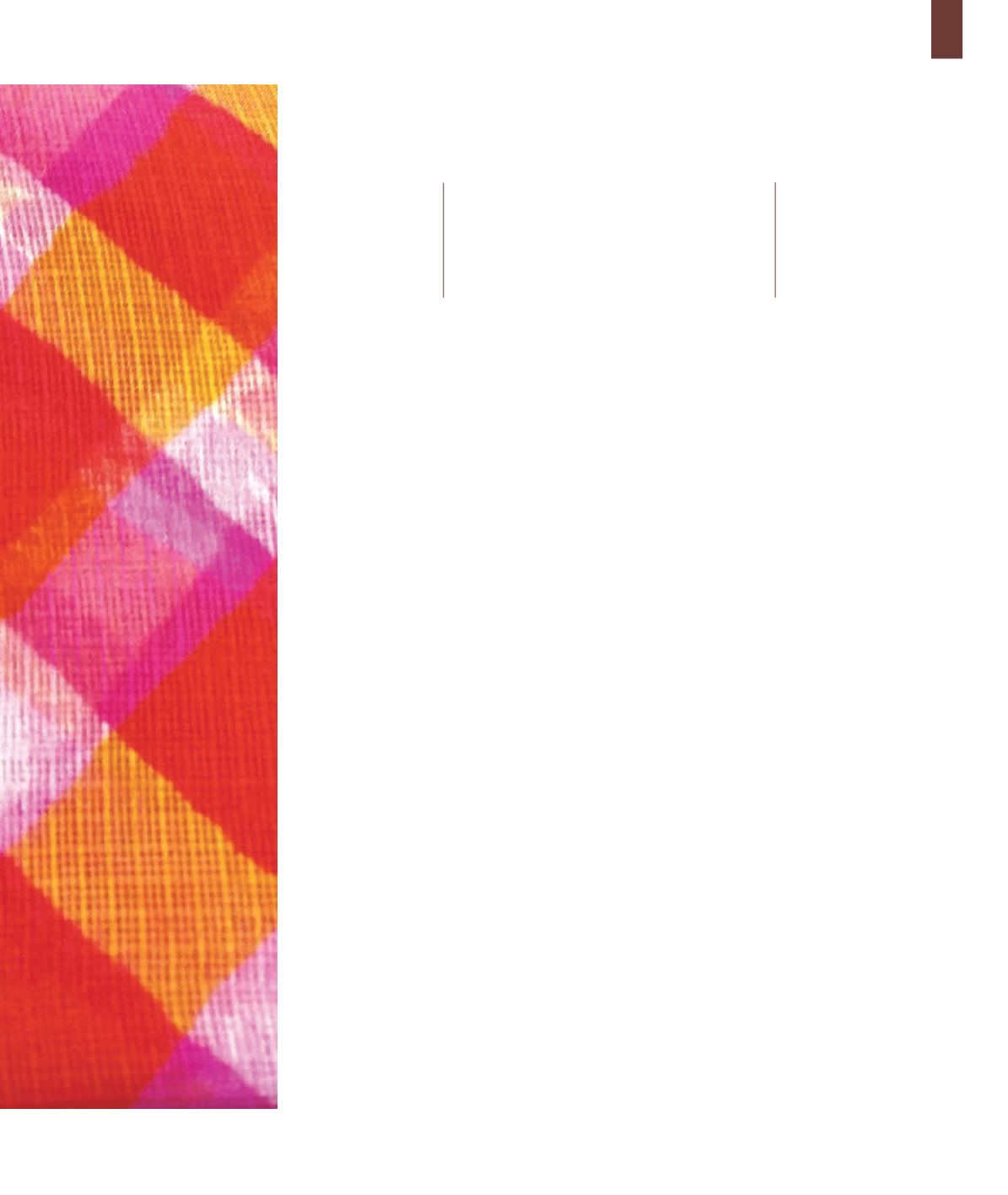
87
Tie-dye can be done on different
types of fabrics namely, cotton, silk,
jute and synthetic fabrics. It has
different expressions – Bandhani,
Lehariya and Mothara.
such as the
garara, ghaghra
(long skirt), kurta
(men’s long shirt) and dhoti (men’s lower
garment) were decorated with tie-dye. Sarees
came to be tie-dyed after the 18th century.
The respected royal family of Tonk has always
patronized tie-dye and encouraged our craft.
During the traditional festivals of Teej and
Gangaur the members of the royal family wear
traditional tie-dye attire in
rani
pink and red
colours. The men of the royal family wear tie-
dyed
pagdis
and the ladies wear tie-dyed
odhnis
.
Teej falls in the
Savan
month that is during the
rainy season, and on this day married women
pray to Lord Shiva and Goddess Parvati to
bless them with a long and happy married life.
The colourful tie-dyed attire looks beautiful
against the monsoon sky. During Gangaur,
women worship Gauri, the wife of Lord Shiva
and a colourful procession celebrating the
festival is taken out. The tie-dyed attires add joy
and colour to the festival.
Tie-dye can be done on different types of
fabrics namely, cotton, silk, jute and synthetic
fabrics. It has different expressions – Bandhani,
Lehariya and Mothara. Bandhani is created by
taking up and resist tying areas of the fabric
according to the pattern created on a fabric,
and then dyeing the fabric to achieve small
roundels. The pattern is first transferred on
the fabric either by free-hand sketches, by
stamping wooden blocks or through stencils of
polythene sheets.
Once the pattern is impressed, the tying of
knots commences. The fabric is pushed up
with the long, pointed nail of the little finger
of the left hand from underneath and the cloth
is deftly tied tightly leaving the tip of the knot
free of the thread. Sometimes the pointed spike
of a special thimble is used for creating tiny
knots. All the knots which are to retain the base
colour are tied, quickly moving from one spot
to the next, without breaking the thread. In
this manner, working with skill and speed, the
craftsperson quickly moves across the fabric
tying knots.
Once all the knots are tied, the fabric is dyed
with the lightest colour among those selected
for the pattern. It is then rinsed, squeezed and
dried. It is then tied again before being dipped
in a darker colour and the process is repeated
till the fabric has been dipped in the darkest
colour finally that may be red, purple, dark
green, blue or black. After the final colouring,
the cloth is dried and then all the knots are
opened to reveal the motifs and patterns
created with colourful dots and/or concentric
rings that have a tiny centre of the last dye
colour. Often tie-dyed textiles are sold with the
resist threads intact to indicate that the fabric
is a genuine tie-dyed fabric and not one simply
printed in a tie-dyed pattern.
A variation of the Bandhani tie-dye dyeing
technique is Lehariya (from the Hindi word
lehar
that means wave) whereby fabric is first
washed to remove starch and then rolled or
folded and tied tightly in sections and dyed
resulting in diagonal stripes in one direction.
The process is repeated with different colour
dyes. The resist threads are opened to reveal


